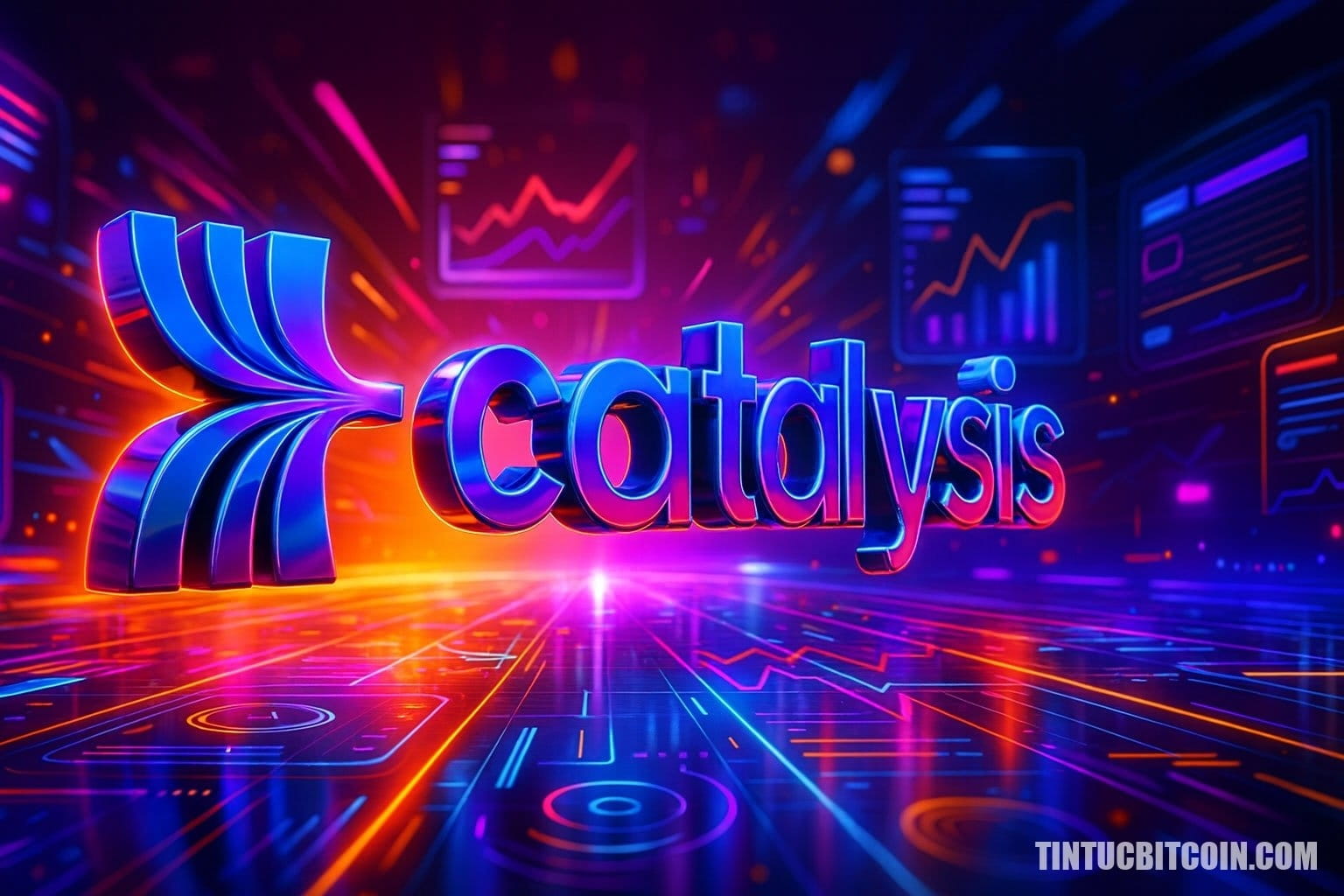
Catalysis is a pioneering Web3 infrastructure that provides the first Security Abstraction Layer, helping to unify and simplify the integration of security from multiple Restaking protocols.
This platform allows developers and node operators to access economic security from EigenLayer, Symbiotic, Kernel, Babylon, and SatLayer through a unified interface, saving time, costs, and reducing deployment risks.
MAIN CONTENT
Catalysis builds the first security abstraction layer for Web3, unifying multiple Restaking protocols.
The platform provides an SDK, dynamic security allocation, and a unified management interface for decentralized networks.
Catalysis successfully raised 1.25 million USD from Hashed Emergent, Presto Labs, and other funds (04/2025).
What is Catalysis?
Catalysis is a Web3 infrastructure project that develops a security abstraction layer to unify and simplify access to Restaking protocols such as EigenLayer, Symbiotic, Kernel, Babylon, and SatLayer.
This platform acts as a bridge between decentralized networks, node operators, and Restaking protocols. As a result, decentralized verification services can access shared security without needing to build their own infrastructure.
Where does Catalysis stand out?
Catalysis stands out for its ability to unify multi-protocol security and provide a single abstraction layer, eliminating the complexity of Restaking integration.
Additionally, Catalyst-SDK also helps reduce development costs and time for AVS by up to 80%, while supporting dynamic security allocation in real-time.
"Catalysis addresses one of the biggest problems of Web3: security fragmentation. The platform provides a unified interface for decentralized networks to easily access security resources."
Insights from Hashed Emergent, a Web3 investment fund (2025)
How does Catalysis unify multi-protocol security?
The platform allows for the direct integration of major existing Restaking protocols like EigenLayer, Symbiotic, Kernel, Babylon, and SatLayer through a single abstraction layer.
As a result, instead of managing each protocol individually, decentralized networks can use a single interface to access and allocate security.
What benefits does Catalyst-SDK offer developers?
Catalyst-SDK helps shorten development time and costs for AVS management by up to 80%, while minimizing deployment risks.
This is an essential tool for projects wanting to scale quickly without a large technical team.
What does a unified interface mean?
Instead of interacting individually with each Restaking protocol, Catalysis offers a single interface, simplifying the management and operation of security.
This helps node operators save effort, avoid confusion, and ensure scalability.
What are the advantages of dynamic security allocation?
Catalysis supports real-time allocation and rebalancing of security across different Restaking protocols.
This mechanism ensures cost optimization while helping networks maintain stable security performance against market fluctuations.
What are the components of Catalysis?
Catalysis consists of three main components: Networks, Node Operators, and Restaking Protocols.
Each component plays a unique role in maintaining shared security and connectivity between stakers, decentralized networks, and verification infrastructure.
How do Networks in Catalysis operate?
Networks are decentralized services like AVS, BVS, DVN, using shared security to verify and decentralize.
Thanks to Catalysis, these networks can leverage diverse security resources without needing to recreate separate infrastructure.
What is the role of Node Operators in Catalysis?
Node Operators are entities operating software, responsible for verifying and securing the network through the Catalysis Stack.
They help ensure integrity while optimizing the extraction of benefits from Restaking.
How do Restaking Protocols contribute?
This is where users Restake assets to provide security for networks, acting as a marketplace connecting stakers, networks, and node operators.
Catalysis makes this process more transparent, automatic, and easier to manage.
How does the mechanism of Catalysis work?
Catalysis operates through a series of processes including network registration, security integration, security allocation, node operator management, reward distribution, and monitoring.
These steps are designed to be automated, minimizing the risk of errors and optimizing operational costs.
"The ability to monitor and adjust security configurations in real-time is a key factor that sets Catalysis apart from traditional Restaking platforms."
Web3 Security Landscape Report 2025, Messari
How are network registration and integration carried out?
Decentralized networks can register directly on Catalysis to utilize shared security from multiple Restaking protocols.
The abstraction mechanism allows networks to deploy quickly without having to rewrite their own integration systems.
How does Catalysis allocate security?
The platform has the ability to rebalance security in real-time across protocols, ensuring optimal costs and performance.
This allows the network to maintain a strong security state against market fluctuations.
How are rewards managed and distributed?
Catalysis automatically connects networks with node operators, handling staking, slashing, and reward distribution for Restake participants.
The highlight is that native rewards can be distributed on any platform without transfer or cross-chain bridge.
How did Catalysis successfully raise funds?
On April 24, 2025, Catalysis successfully raised 1.25 million USD from Hashed Emergent, Presto Labs, and several other investment funds.
This funding is seen as a foundation to drive the development of a unified Web3 security infrastructure in the new phase.
"We believe Catalysis will become the most important security infrastructure layer for the next generation of Web3 applications."
Representatives from Presto Labs, press release 04/2025
Frequently Asked Questions
Is Catalysis a separate blockchain?
No, Catalysis is a unified security infrastructure layer, not an independent blockchain.
Who can use Catalyst-SDK?
Web3 developers looking to build AVS, BVS, or DVN can use Catalyst-SDK to save costs.
Does Catalysis support cross-chain?
Yes, the platform allows for the distribution of native rewards without the need for cross-chain bridges.
What benefits does Catalysis provide for node operators?
Node operators can manage security from multiple Restaking protocols through a single interface, reducing complexity and increasing profitability.
How much has Catalysis been invested in?
As of April 2025, Catalysis has successfully raised 1.25 million USD from funds such as Hashed Emergent and Presto Labs.
Source: https://tintucbitcoin.com/catalysis-la-gi/
Thank you for reading this article!
Please Like, Comment, and Follow TinTucBitcoin to stay updated with the latest news about the cryptocurrency market and not miss any important information!
